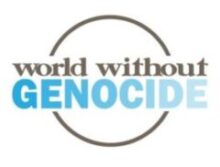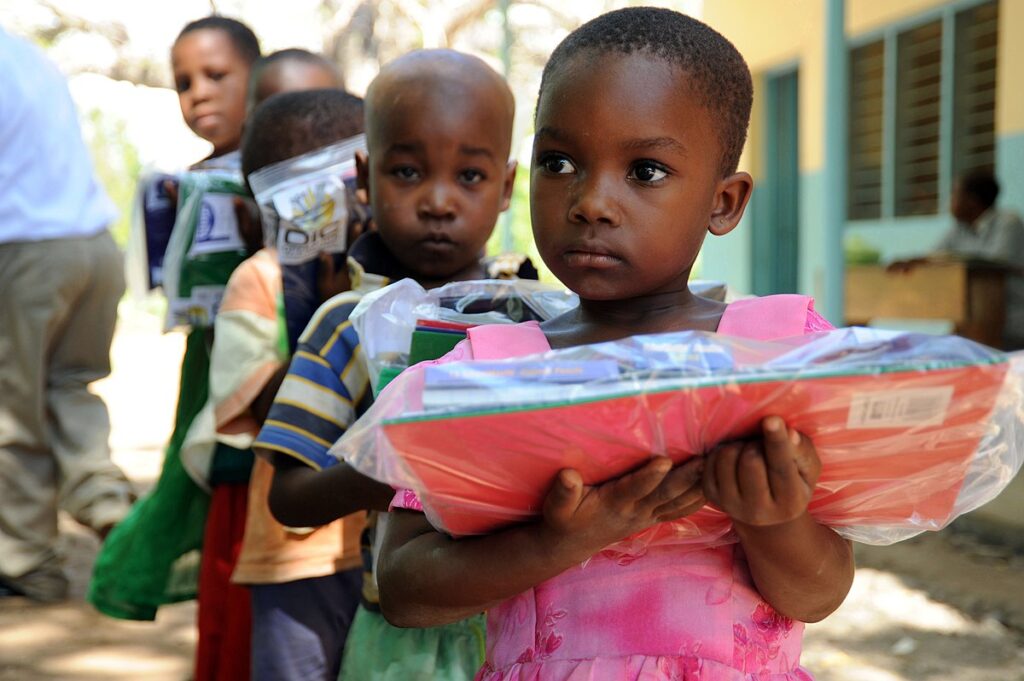Protect Stateless People
Juliette, a 10-year-old girl from the small West African country of Benin, wanted to attend school but couldn’t. She was stateless: she did not have a birth certificate, so she had no way of proving that she was a citizen of any country.
Stateless people cannot travel, access medical care, own a house, vote, or go to school.
At least 10 million people worldwide are stateless, including more than 200,000 people living in the United States.
Actions
1. Email your members of Congress today
Ask your U.S. Senators and Representative to ratify the three core international treaties protecting refugees and stateless people: UN Conventions ratified in 1951, 1954, and 1961. The US has yet to ratify these conventions, meaning stateless people and refugees in the US have almost no legal protections and no legal right to housing, employment, medical care, and equal protections of the law.
Email your U.S. Senators:
- Find your U.S. Senators online here.
- Use or modify our email template to send to your Senators.
Email your U.S. Representative:
- Find your U.S. Representative online here.
- Use or modify our email template to send to your Representative.
Learn more
- Global Action Plan to End Statelessness, 2014-2024, UNHCR — 10 actions to end statelessness.
- The Justice Project, World Without Genocide — Read the chapter, “U.S. Ratification of International Human Rights Treaties,” on how the US can ratify international treaties and why it is important.
Who is a stateless person?
A stateless person is someone who isn’t a citizen or a national of any country. Stateless people live in all parts of the world but are not protected by any state.
People become stateless in many ways. Some are stateless because their birth is not properly registered. Others become stateless because their citizenship documents are lost or destroyed. However, the most common reason people become stateless is discrimination enacted by the country where they live.
Many countries have discriminatory laws wherein certain groups are denied citizenship because of their ethnicity, religion, national origin, or even because only men can pass their nationality on to their children. Countries often revoke the citizenship of groups or individuals during ethnic cleansing and genocide.
Most stateless people lack identification like a passport or birth certificate. As a result, they cannot travel, get medical care, have access to education, own a house, vote, and more. Many must work illegally to make money and they live in constant fear of being detected, arrested, or deported.
International Law. Three international United Nations treaties outline the basic rights and protections of stateless people under international law.
The UN’s 1951 Convention relating to the Status of Refugees is an international treaty that outlined the basic rights of refugees. Refugees are fleeing a country where their lives or liberties are in serious danger. Not all stateless people are refugees, but the two groups overlap significantly. When a state revokes a group’s citizenship, group members often become refugees. They must flee somewhere so they can access basic rights and services. At present, 146 countries have ratified this treaty. The US is not one of them.
The UN’s 1954 Convention relating to the Status of Stateless Persons was the first international treaty to outline the rights of stateless people. Countries that ratify this treaty must respect stateless peoples’ rights to housing, education, access to identity documents, religious freedom, and more. Only 96 countries have ratified the Convention and can be brought to the UN court if they violate its terms. The US is not one of these ratifying countries.
The UN’s 1961 Convention on the Reduction of Statelessness supplements the 1954 treaty. It defines how stateless people can become citizens of a country and it sets out rules to prevent people from becoming stateless. As of 2021, 77 countries have ratified the Convention. The US has not.
The number of states ratifying each of these Conventions declines from the 1951 to the 1961 Conventions from 146 ratifying states to 96 to 77. This perhaps reflects a combination of a sense of a lack of urgency or a state-level unwillingness to address this very serious situation.
Statelessness in the United States. The U.S. does not provide any special protections for stateless people. Some are deported back to countries that do not consider them citizens. Stateless people in the US do not receive support in obtaining travel documents and they can be held in immigration detention centers for months, since they are unable to prove their identity.
UN Plan to End Statelessness by 2024. In 2013, the UN High Commissioner for Refugees called for the international community to end statelessness. Countries around the world, international organizations, and civil society convened to create the “Global Action Plan to End Statelessness: 2014 – 2024.” The plan aims to resolve existing statelessness, prevent new cases of statelessness, and better protect those who are currently stateless. It outlines 10 key steps. One of the steps is for countries to ratify the UN Statelessness Conventions. Other steps seek to ensure that nationality is not granted or removed in discriminatory ways, that there is better data on stateless people around the globe, and more.
Updated September 2023.



